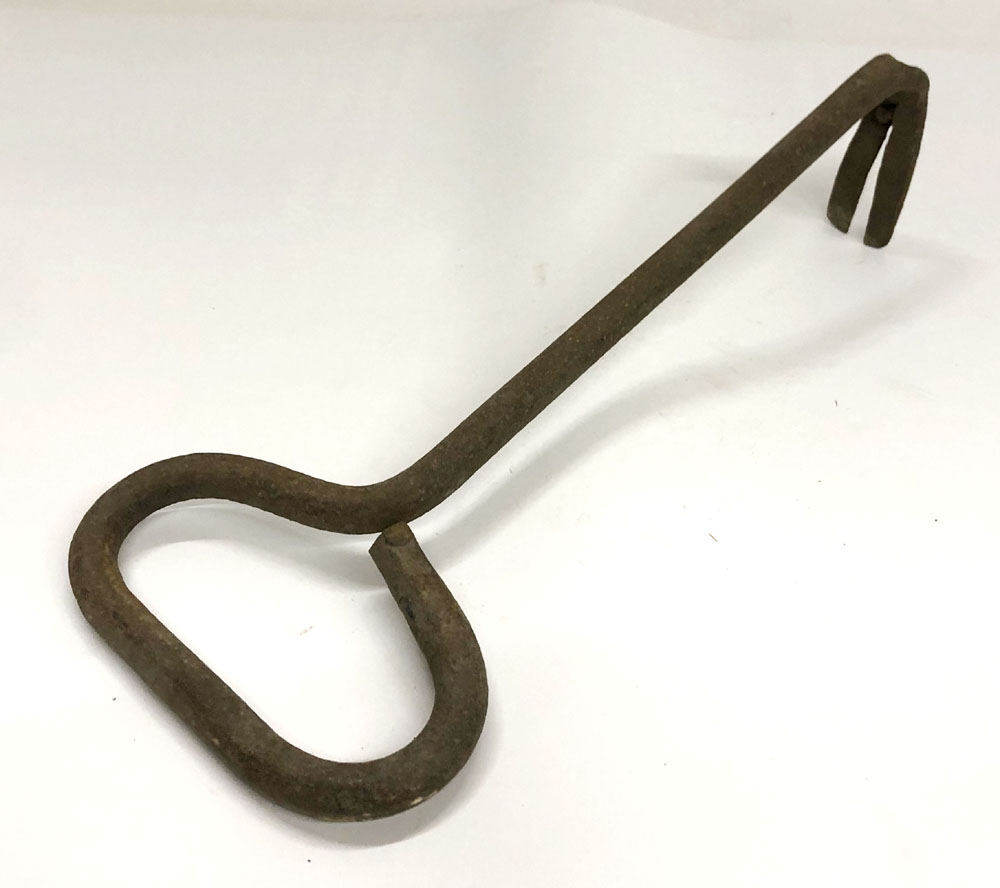
Philosophy of pure wire
The essence of hop work is hidden in the wire drawing process
Johann Andreas Schmeller explained to us in the 3rd part of his “Bavarian Dictionary” of 1836:
“Strackel = stick, beating for thrusting, beating (…) sträckeln = to beat, to thrust, to drive excessively, to mat down.”
Who in former times in the wet, went off in cold autumn days to the Strackelziehen into the hop garden had not the intention to beat someone up. The beaten was he himself. Few things sum up the spirit of earlier hop work more succinctly than pulling the wires out of the harvested hop bines. For that was what it was really all about, the wires; no one was interested in the old bines.
After the introduction of wire trellises from the end of the 19th century, new climbing aids had to be installed for the hops year after year. After cords had not proven themselves in the long run, because they were too complicated to fasten and not stable enough, one gradually switched over to wire. Heavy, galvanized wire, equipped with a special hook at the top, with which this training wire could be fastened to the top of the trellis. The wires were expensive and not an insignificant item in the cost balance for a hop farmer. No one would have thought of throwing the wire away at the end. Recycling was not a moral duty, but an economic necessity.
Whoever have seen how stubbornly a hop vine wrapped itself around a wire after months of climbing can somewhat imagine what it meant to have to pull the wire out of that vine again. Otherwise, however, the whole thing would have had no logic. A vine that slipped easily from the wire would never have reached the top of a hop yard. So muscle power was needed. And patience.
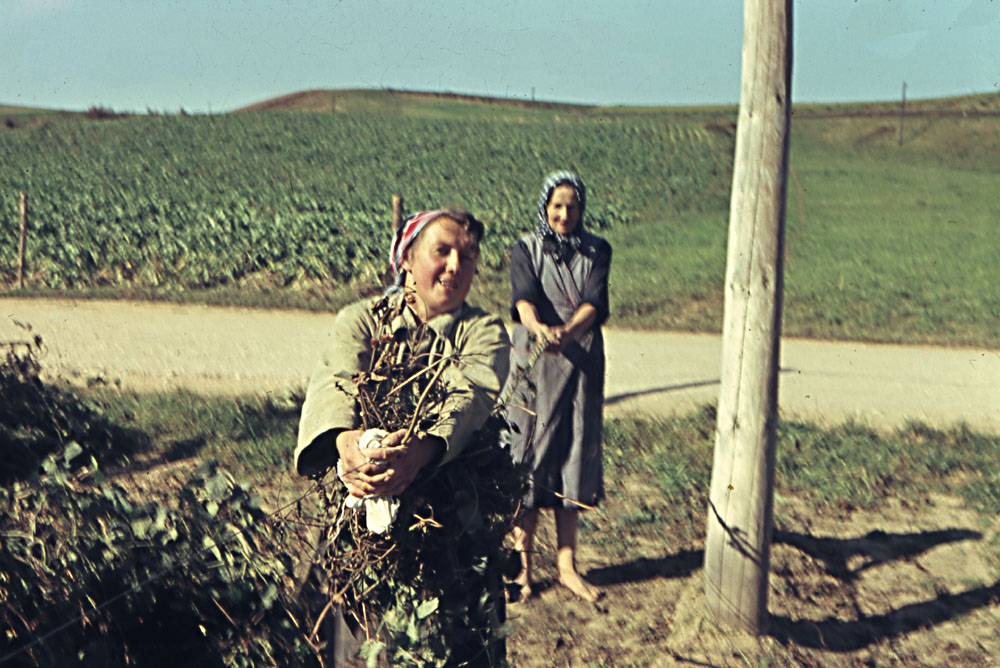
One of the few surviving shots of wire pulling, unfortunately a bit out of focus.
The appropriate tool for this was the Strackelzieher. A simple iron claw with a handle. Nobody knows who invented the first one. It has never been mentioned in any hardware catalog in the world, no essay on hop work has ever described it, and no agricultural textbook has erected a monument to it. And yet the Strackelzieher was part of the basic equipment in every hop-growing enterprise. One or two hop growers modified its design somewhat. But in the end, the adaptations were kept within limits, the basic shape hardly changed.
Which is surprising, because the work of pulling out the wires virtually demanded relief. When old hop farmers were asked to draw up a kind of ranking list of the once most annoying hop jobs in retrospect, pulling out the wire reliably landed at the top. The pulling and plucking was not only extremely strenuous. It was downright dirty work. Because slightly dried vines slipped more easily than the fresh ones and because the whole thing was not a time-consuming business, the pulling work fell into the wet, cold autumn months, when the other work had already been completed. And when the vines were finally down, special techniques had to be developed to prevent the many wires, which had been bent several times in the meantime, from becoming hopelessly entangled with each other. After all, one wanted to reuse them. A special addition to the excitement was the hook at the upper end, whose very nature it was to hook itself onto any wires and thus also tug intensively at the nerves of the hop farmers during the wire work. When, in the depot of the German Hop Museum, it was once necessary to unravel several rolls of wire thrown on top of each other together with their hooks, fortunately no one was present who would have heard the countless curses sent to heaven.
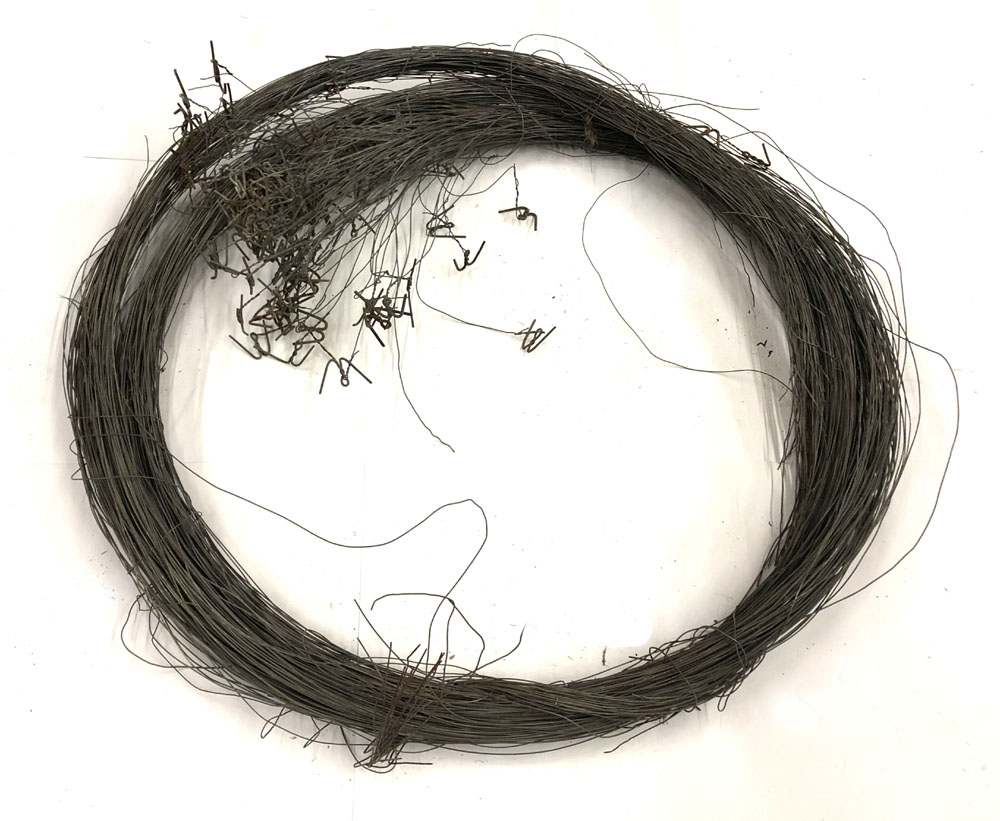
A reel with guide wire and wire hook.
Nothing better represents the economy of rural hop-growing in earlier times than this work process. All the ranting and raving did not matter. Behind it there was not only thrift. The spirit of sustainability, which is so highly praised nowadays, was in every wire that was pulled out, in every coil of wire that was wound, in every bundle of wire that was unwound in the spring and reassembled in the hop yard. Hop-growing at that time was characterized by the fact that, on the one hand, it was interwoven with the anonymous markets of international commodity transactions and their capital flows, but on the other hand, it was firmly rooted in the conservative spirit of peasant farming. Those who pull out wire were closer to the Middle Ages than to the modern market economy.
Quite a few farmers thought up special solutions. Horse power was used, special mountings on the scaffold columns, multiple pull-outs. Clever locksmiths built devices with rotating knives and hand cranks. In the 1950s, even motor-driven wire replacement machines appeared, for driving on the tractor’s PTO shaft. A last example has been preserved in the Hop Museum. However, these devices were not widely used. Too expensive, too unreliable, too complex, too new-fangled. Most farmers stuck to pulling by hand.
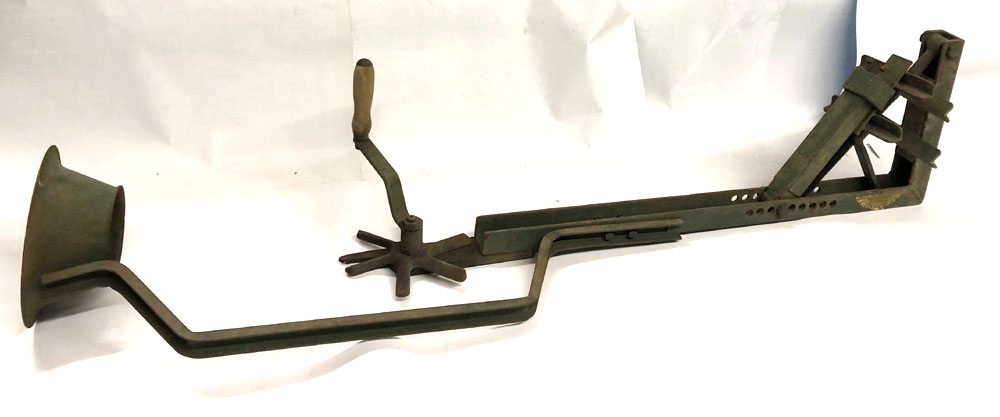
This device for wire drawing was build at the Reichertshofen metal goods factory, on the edge of the Hallertau region. How well it worked is not known.
Until the picking machine came along. Then it was over immediately. The new harvesting technology had no place for a galvanized wire with a hook. It damaged the sensitive picking fingers of the expensive picking machine, and once accidentally wrapped around the picking drum, it could block the harvesting work for hours. In the hectic pace of harvesting work, this was no longer tolerable.
And so suddenly there was an end to sustainable, an end to multiple use and peasant thrift. Galvanized wires were replaced by thinner ones, and the vine chopper took the place of the Straklzieher. It chopped everything short and small, whether vine or wire, and then the whole thing landed in the soil of the hop yard. Or on the country road, to the particular delight of motorists and motorcyclists. “Hop spikes” and their tire-killing talent are still a proven excitement in the autumn daily press of the hop regions.
So why not go back to wire removal? Not even an amateur organic hop grower would come up with such an idea today. Even if someone were to be found somewhere who would take on such work, even with so much mechanical support, who would pay for it? Who would even want to pay for it? No hop farmer, no hop merchant, no brewer, no beer drinker. Ecology is above all a function of economic efficiency.
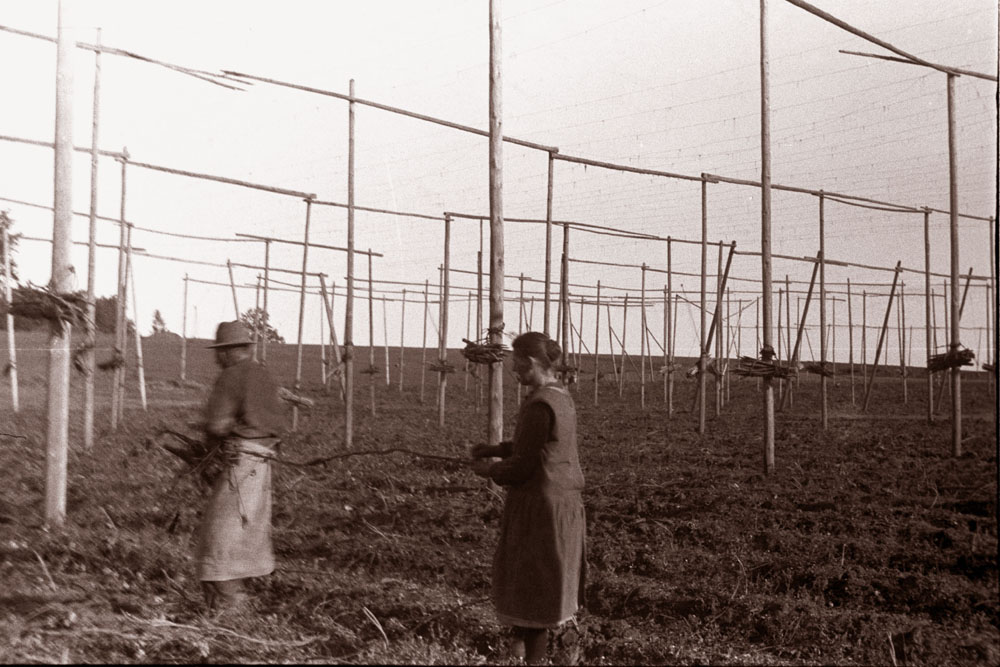
It was somewhat easier to work in pairs.
Perhaps the Strackelziehen would be a smart idea for a tourist event in the late summer months. Whoever manages the most gets a trophy and is then in the newspaper and social media. Sort of. This would require a bit more tourism in the hop regions, but that could perhaps be increased as a result. Presumably, however, even today the Strackelziehen would find few friends as a sporty leisure activity. The fairy tale of the good old days has never been particularly popular in the hop regions. In this respect, it is actually very authentic. And thus fully in line with the trend again.